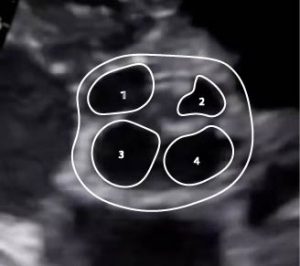
Kathryn Statham , Genevieve Carbonatto
Congenitally abnormal valves
- Bicuspid
- Unicuspid
- Quadricuspid
Bicuspid valves (BAV) have been classified in many different ways. An easy classification looks at the number of cusps, the presence of raphes and the position and symmetry of cusps. A raphe refers to a conjoined area of two underdeveloped leaflets turning into a malformed commissure between both leaflets . When no raphe is present, the valve is called strictly bicuspid.



BAV are
- 3 X more common in men
- May be associated with non valvular lesions such as abnormal coronary artery anatomy. Most patients have left dominant coronary circulation. The left main dominant may arise from the pulmonary artery.
- Often associated with an aortopathy involving dilatation of the thoracic aorta
- Associated with coarctation of the aorta in at least 20% of cases
Below are clips of a bicuspid valve seen from the PLAX, the PSAX and the PSAX view with colour Doppler
Notice the bowing of the aortic valve


Notice the soccer ball closing of the aortic valve and compare this with a normal trileaflet AV


Bicuspid valve above


Normal tricuspid valve above
PSAX view of bicuspid valve with colour Doppler showing regurgitation.
Quadricuspid valves are rare congenital abnormalities with an estimated frequency of < 0.05%. The most common abnormality associated with quadricuspid aortic valves is aortic root dilatation. AR is found in 30% of patients with quadricuspid valves


Unicuspid aortic valves is a very rare congenital abnormality presenting in the 3rd or 5th decade of life (unless identified in infancy) with severe aortic stenosis and regurgitation





